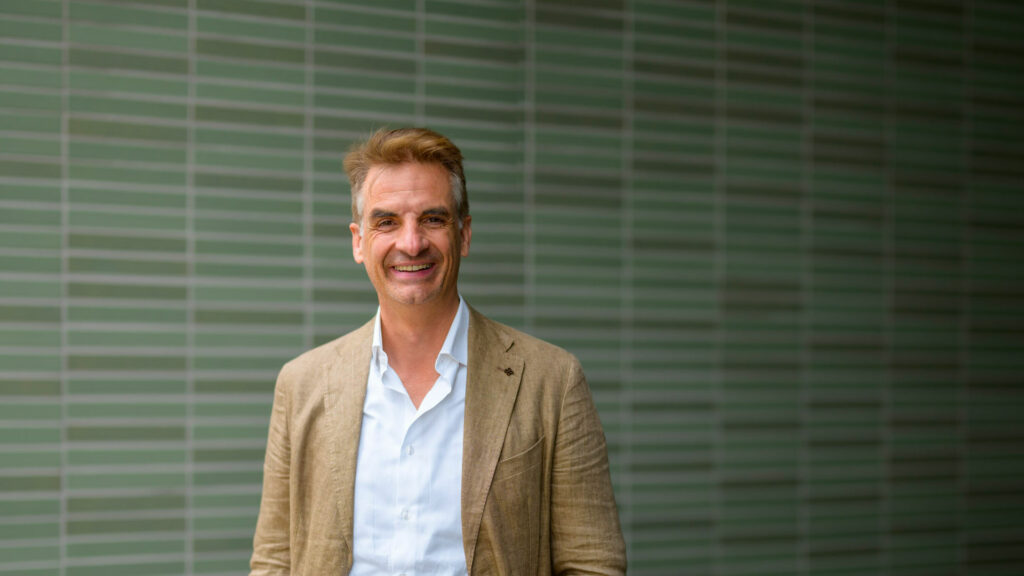One of our latest challenges as an AI company is the digitization of that regulatory mammoth called EU Taxonomy, aiming to make the process as automated and smooth as possible. In this interview with our CEO and founder, Dr. Hans-Peter Güllich, you will get a deeper understanding of the complexity of machine learning applied to this regulatory framework – in a complex space at the edge of FinTech, RegTech, and GreenTech.
Dr. Hans-Peter Güllich, could you give us an idea about the complexity of the EU Taxonomy, and what it means to implement it with AI software?
Firstly, you need to think about 30.000 pages of regulation that are dense in terms of parameters, exceptions, adaptations, etc., and try to translate this into a logic that the software can understand and deal with.
Secondly, it is essential to mention that although the EU made a lot of efforts to create one unified cross-country regulation, understandably there are situations as well where this was not possible. And we also need to consider those in building our AI software.
Indeed, there are country-specific applications of the EU Taxonomy regarding certain types of economic activities. For instance, real estate energy certificates for buildings are different for each country, the AI has to be trained respectively for being capable of automatically identifying and extracting relevant information needed.
Not to forget to keep these local regulations inclusive amendments up to date within the software, where AI logic can also be of great help.
For us, this means that for certain economic activities, we face the complexity of adapting the intelligence of the software to country-specific regulatory applications within the more general frame of the EU Taxonomy.
However, luckily enough, this is not always the case. When it comes, for example, to steel production, the criteria are the same all over Europe.
The main goal we aim to achieve with AI is to simplify the compliance work of banks and corporates, allowing them to save precious time and resources that can be better invested in sustainability. That is our final target: empower them to reorient capital flows towards sustainable investment to power a greener and more inclusive future.
Dr. Hans-Peter Güllich, CEO & Founder of Dydon AI
How is AI helping users to tackle this complexity?
Artificial intelligence often sounds like something almost supernatural. Still, if we are honest, as one of my professors at the university used to say, AI, in most cases, is just highly advanced informatics.
Indeed, Artificial Intelligence is all about logic. With various models and methods (e.g. neural nets, fuzzy logic, etc,) we are trying to get closer to human reasoning.
Starting from this consideration, what we did in terms of AI for our EU Taxonomy software called TAXO TOOL is, in the first instance, the digitization of the EU Taxonomy. The regulation has been translated into decision trees, allowing easy processing of the respective assessment for both, banking employees during the credit application process and corporates for assessing their EU Taxonomy alignment. We could say that this is what a self-assessment tool mainly does, guiding and supporting the user through the process. But this was only the starting point for us.
Second, we had to overcome the lack of data dilemma by introducing respective carbon emission calculation models based on process engineering knowledge. Something that makes a big difference when it comes to cases with missing data, as is often the case with SMEs.
And thirdly we introduced our Natural Language Processing (NLP) stack enabling us to catch and use text and answers from available documents concerning the project under evaluation (e.g. Energy Certificates of Buildings).

What are the latest trends in using AI for this particular application between RegTech, FinTech, and GreenTech?
The outcome of our discussions with customers is how the data capture and assessment can be more and more automated or if data processing could be done through a “machine-to-machine” exchange.
What we have to take into consideration is the fact, that due to the complexity of the EU Taxonomy regulation, a completely automated process will only be possible for a very small number of the defined economic activities (e.g. within real estate assessment).
Increasing the automation level of the assessment process is clearly an objective of both, banks and firms. Thanks to our advanced AI components, we are proud to state that the level of automation possible with our TAXO TOOL is particularly high.
The main goal we aim to achieve is to simplify the compliance work of banks and corporates, allowing them to save precious time and resources that can be better invested in sustainability. That is our final target: empower them to reorient capital flows towards sustainable investment to power a greener and more inclusive future.
Dr. Hans-Peter Güllich
Dr. Hans-Peter Güllich is the founder and CEO of Dydon AI, a Swiss company offering transparent and flexible AI solutions. One of the latest software developed by the company in collaboration with VÖB and VÖB Service is the TAXO TOOL – AI solution for Sustainable Finance.
After his studies in Business Information Technology, Dr. Hans-Peter Güllich was awarded a doctoral degree in building an AI-based prediction model to assess counterparty risks. A model which has been constantly enhanced and still forms the core of the Dydon AI prediction engine.
His professional experience spans more than 25 years, most of which with consultancies, financial institutions, and IT solution providers.
His extensive knowledge of AI, technology, ESG, EU Taxonomy, risk management, and sustainable finance sees him as a speaker at fintech and regtech events.






